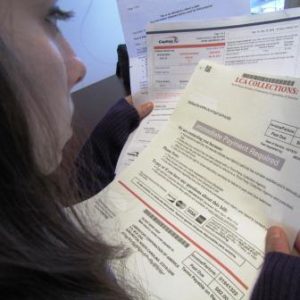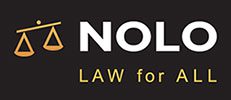
Student loan debt nags at over 44 million Americans facing a total of 1.48 trillion dollars in student loans. 14% owe over $50,000.
That holds student loan holders back from making desired purchases such as homes and cars. It challenges young adults otherwise seeking to gain independence and get a solid start in life.
The bankruptcy discharge issued in a consumer bankruptcy excludes student loans. Those seeking to eliminate student loan debt must demonstrate “undue hardship” in an additional court filing within the bankruptcy case. This is true in both Chapter 7 and Chapter 13 consumer bankruptcies
The undue hardship requirement presents not what you might think under the ordinary meaning of those words. As we’ve pointed out in another article, “undue hardship” poses a barrier requiring several specific legal showings in court. More about undue hardship here.
Trump Calls For New Look at Bankruptcy & Student Loans
It came as a bit of a surprise on Tuesday, February 27, 2018 when the venerable Wall Street Journal on page one headlined “Trump Administration Looking at Bankruptcy Options for Student Debt.”
On that day the U.S. Education Department announced an effort seeking public input on the issue. The problem is that when Congress passed the law imposing the undue hardship requirement in 1976, the term was never defined in the federal law. Instead, bankruptcy courts, court by court, must define the term. This has developed into a circuit-by-circuit quest which for the most part imposes a major challenge to those seeking the discharge of student loans.
No president can change the actual law. Instead, congress would need to revisit the issue of student loans in bankruptcy. But with a nod from the president, change is more likely.
The executive branch could also re-think the level to which the government opposes student loan borrowers trying to make a case for undue hardship in order to get rid of student loans in bankruptcy.
Bankruptcy Law Changes
Bankruptcy attorneys see that this area of the law evolves as time goes on. A major change swept bankruptcy law in 2005 under the bizarre, to outsiders, law known as The Bankruptcy Abuse Prevention and Consumer Protection Act, or “BAPCPA”. Some acronyms are unpronounceable.
The 2005 Bankruptcy changes included a means test and required credit counselling. The bankruptcy means test prohibits potential bankruptcy filers with too much income from filing the preferred Chapter 7 bankruptcy. Those with above average income must instead file a Chapter 13. Chapter 13 requires monthly payments to a bankruptcy trustee for three to five years.
Consumers filing bankruptcy after 2005 must now take a credit counselling class before filing bankruptcy, and do not receive a discharge unless they take a second class, alternately called “debtor education” or “financial management”.
Will Bankruptcy Law Ease Towards Student Loan Borrowers?
Whether bankruptcy laws change again and whether those changes favor those seeking to discharge student loans remains an open question. The fact that the question is on the table is news.
The Education Department said this week it will review when borrowers can discharge student loans, an indication it could become easier to expunge those loans in bankruptcy.
USA Today, Feb. 24, 2018
Student loan advocates for years called for easing restrictions on the discharge of student loans. To be sure other options exist including forbearance, consolidation and in some cases refinancing. But many, largely democrats, pushed to no avail to get Congress to change the law on undue hardship. With the election of Donald Trump in 2016, those advocates largely backed off, taking a “wait and see” stance.
That’s why the news that the executive branch is at least reopening the subject for consideration comes as a bit of a breakthrough. The first step calls on the U.S. Education Department to open a file taking public input on whether and how the undue hardship requirement would be tweaked:
“The department will review the data collected to determine whether there is any need to modify how undue-hardship claims by student loan borrowers in bankruptcy are evaluated,” the agency said.
Wall Street Journal, February 27, 2018
Not many people saddled with student loans actually receive discharge of that debt through bankruptcy. The Wall Street Journal reports that fewer than 500 people even attempted such discharge in the entire year of 2017. The same year a total of about 766,000 individuals and couples filed for bankruptcy.
Between 2010 and 2017 the number of bankruptcy filers even attempting to discharge student loans in bankruptcy went down by 45%. One hurdle is that the actual bankruptcy filing does not even address discharging the filers’ student loan debt. Instead, a separate federal bankruptcy court lawsuit known as an adversary proceeding must be filed raising the issue. That’s where a federal judge applies the stringent undue hardship rules to the facts of each individual case.
Student Loan Debt Pressures Increase
Student loan debt continues to rise. The U.S. Department of Education struggles to collect against a sea of late payments and defaults. The most recent numbers show 22% of those with federally backed student loans failed to make a single payment in the last year. Again, there are other options as mentioned above, but the constantly evolving U.S. Bankruptcy Code may, or may not, come under an additional change in this area.
The author, attorney Andrew D. Myers, practices bankruptcy and personal injury law in North Andover, Massachusetts and Derry, New Hampshire. Although getting rid of student loans in bankruptcy is rare, a bankruptcy, if a viable under other circumstances, may wipe out enough other crushing debt that adequate cash flow may become available post-bankruptcy to address the student loans. The Law Offices of Andrew D. Myers offer an initial free consultation in order to review the facts of your financial life, allowing you to make an informed decision.
Sources:
Shocking Number of Americans Now Owe at Least $50,000 in Student Debt – And Many Aren’t Paying it Down. Money Magazine Feb. 22, 2018
Trump Administration Looking at Bankruptcy Options for Student Debt. Wall Street Journal, Feb. 20, 2018.
Model:
Rebecca Langelier
Visits: 177





I do know that once you sign a loan you have an obligation to pay back a loan. My problem is that after I graduated my health declined and it was difficult for me to maintain health enough to work. Why can’t I discharge the loans?
Unfortunately my student loans outweighed the income that I am making now a couple of years out of college. I am thinking that perhaps a Chapter 7 bankruptcy might be an option because that will eliminate the credit card debt and not having to make those payments every month will free up cash for me to better deal with the student loans. Also if I do the Bankruptcy once, early on, I have heard that over time I will be able to build up my finances and credit rating.